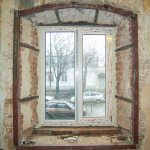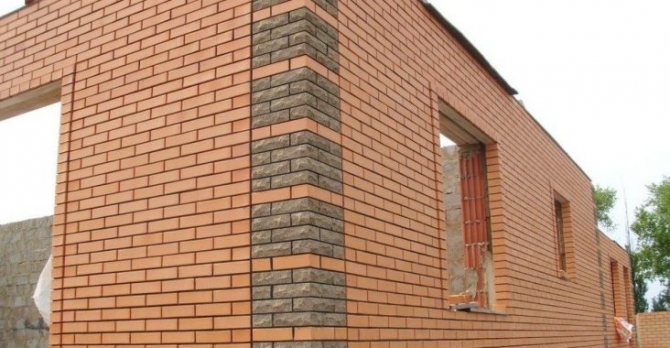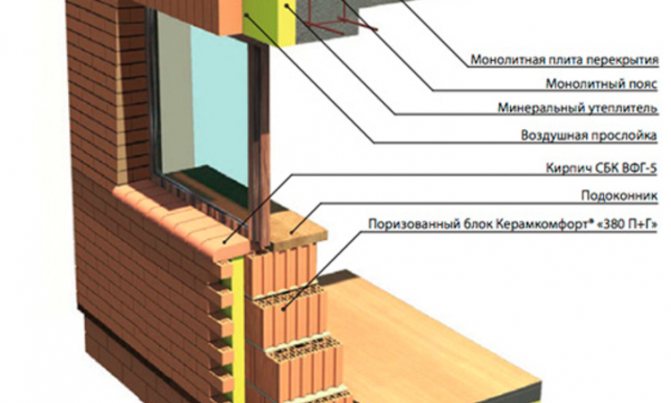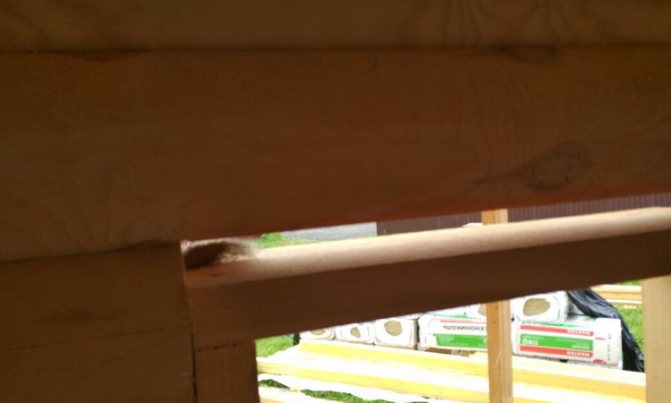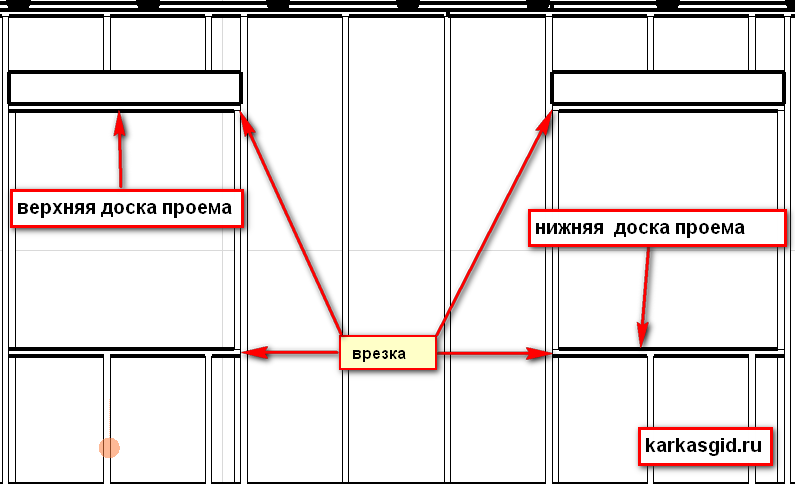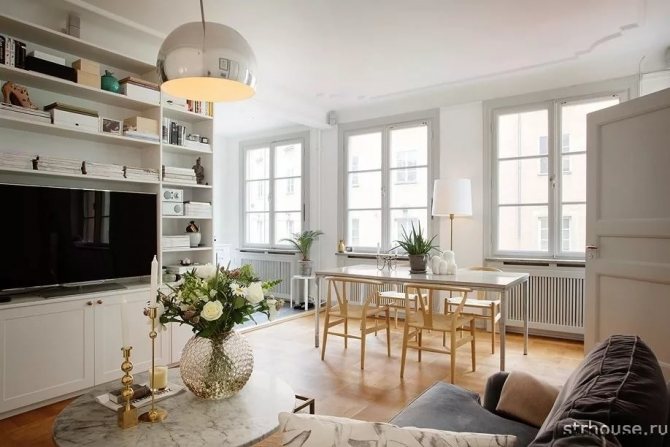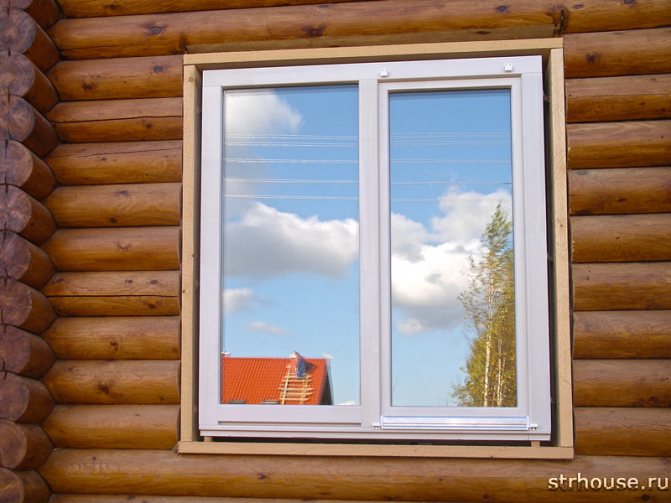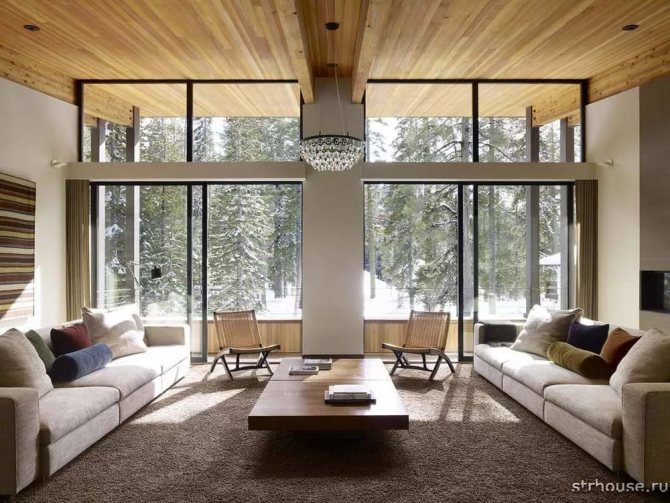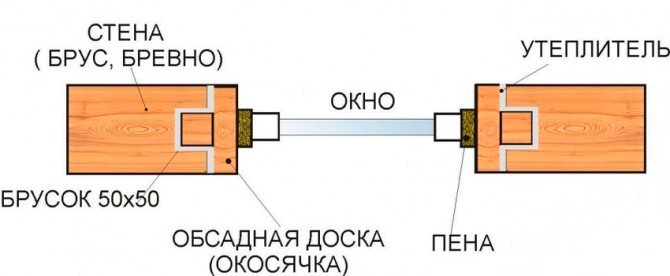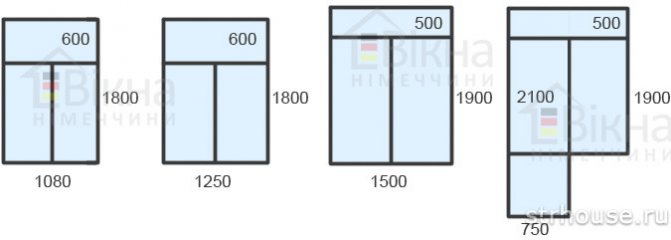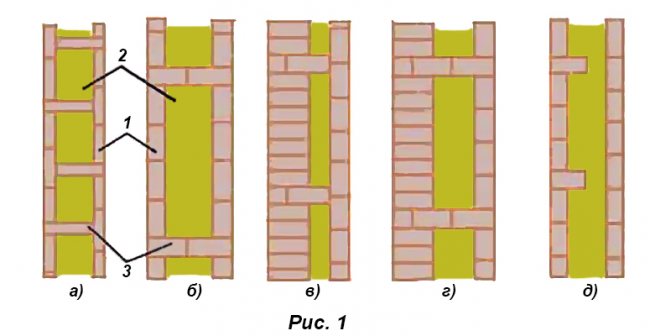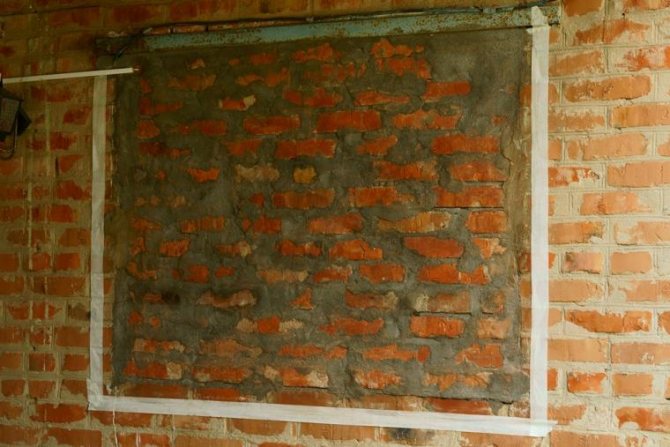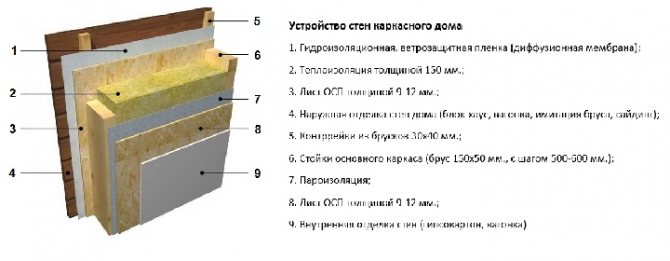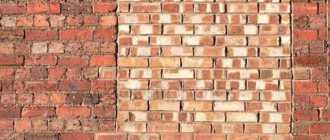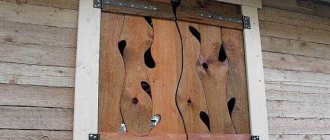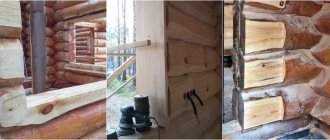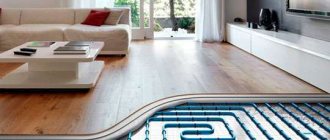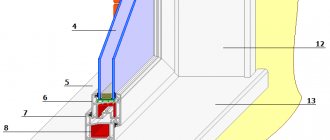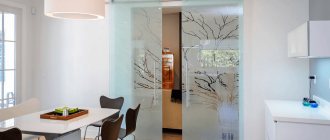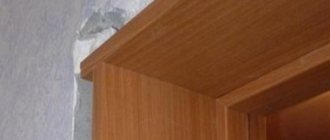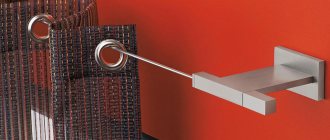The installation of windows in a brick house is carried out strictly in the openings provided for this purpose. The designs of the openings can be very different, they may or may not have room for a slope, a window sill, installation of a sealing rubber, drains. The technical conditions are spelled out in the state standard. This documentation is distinguished by a professional style, which is not always fully comprehensible to the common man. Let's try to understand the features of the window block, the rules for its arrangement and existing standards.
Features of the
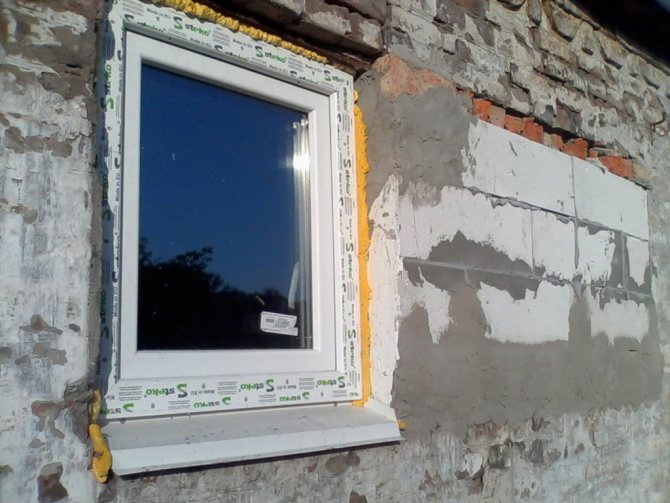
Features of window openings are a factor that determines how exactly the inserted structures will be used, in which rooms they will be located. It is through these holes that rays of sunlight penetrate into the rooms, cold air comes in, and humidity appears. Therefore, proper installation helps to avoid the occurrence of high humidity, mold, and mildew inside the house.
When leaving space for windows, the material from which the walls are assembled plays a decisive role. When it comes to concrete or brickwork, the same parameters are used, the log structure puts forward different requirements for such structures.
Opening standards are widespread and highly sought after in residential buildings. However, the owners of private buildings are increasingly choosing forms, parameters, according to their own preferences.
This orientation often leads to the fact that the finished window blocks are either too large or very small. In addition, they often stand in the wrong place, rationally, correctly. This approach becomes the cause of frame distortions, situations when the sashes do not fit snugly, and condensation forms on the glass. Raindrops can penetrate inside the room, and morning dew appears even on the inner walls of rooms.
According to the established rules, the space where the window will be built should appear even before the completion of the construction of the building. Very rarely, such blocks are made among solid masonry.
Opening functions:
- ensuring the correct installation of frames;
- reliable installation of windows;
- sealing the room;
- moisture removal from the inside to the outside;
- soundproofing;
- heat preservation;
- decoration of internal, external space.
Important! The allotted space should ideally accommodate the frame, window sills, interior and exterior, should not be attached with a thick layer of mortar. A facing niche must be present.
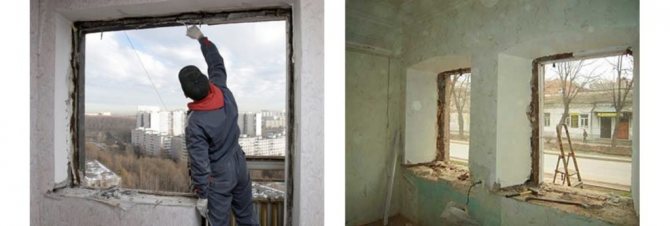

Important Features:
- precisely calibrated level (vertical, horizontal);
- the upper bar must withstand the weight of the material from which the walls are erected;
- location, type of openings should be determined in accordance with existing standards;
- in order to make the correct excavation, it is important to study the typical parameters for residential or utility rooms.
As a rule, modern construction involves the use of ready-made PVC windows. Initially, products are selected that have standard sizes; it is easier and much cheaper to make spaces for them than for non-standard items.
Individual production of window blocks is notable for serious financial costs. Ready-made windows are produced according to standardized parameters, in the same way as builders build standard multi-storey buildings.
GOST establishes the mandatory presence of special designs - quarters. They are protrusions located on the outside of the house. Their dimensions are strictly set by the standards. The quarters are necessary to close the existing gaps in the space between the frame and the wall. This allows you to remove the mounting seal from prying eyes, protect rooms from blowing, moisture penetration, and decorate the structure.
The quarter is a kind of corner of the brick used for facing the building, protruding by на of its volume outward. As a rule, it is mounted inside the opening. If you make a larger ledge, then it will interfere with the correct design of the slopes on the sides. Too small dimensions of the corners do not make it possible to guarantee that the frame will not fall out.
Important! Building standards were created by people with the right level of education and experience, based on research. Therefore, they require compliance with up to one centimeter.
How to lay an opening in the wall with a brick, instructions
When deciding on a redevelopment of a room, we have a question of how to lay an opening in a wall with a brick, we are looking for an answer on the Internet.
Having our own living space, we try, as rarely as possible, to resort to the services of paid craftsmen. Everything that can be done with your own hands significantly saves the budget and most often does not differ at all in quality from professional work.
Suppose you have a need to brick a window opening, but you have no idea where to start.
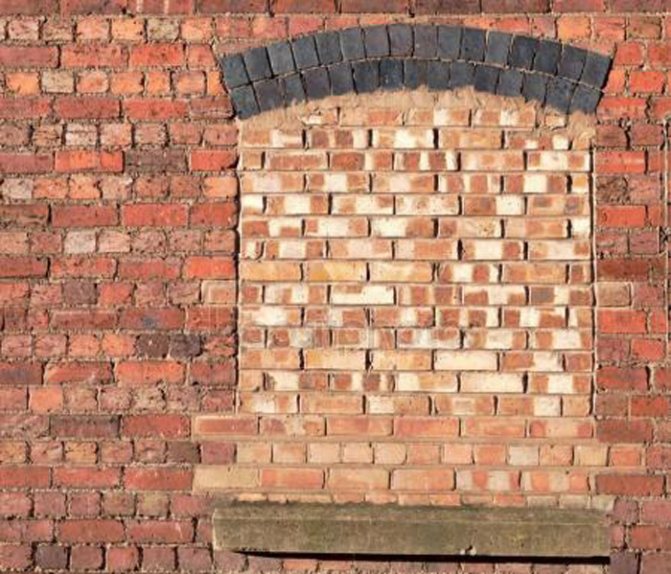

Do not panic, because this does not require special skills. If you collect the necessary materials and tools, then stage by stage, you can achieve what you want.
Standards
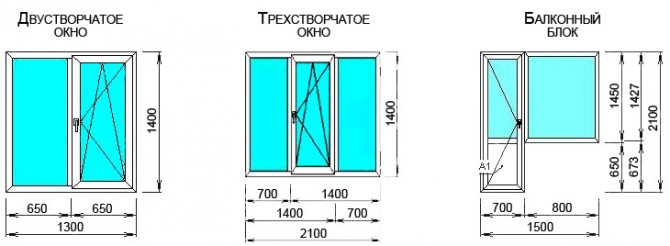

The window opening has its own standards, and they differ for houses that were built in different time periods. There are various types of window openings for the so-called "stalinkas", "brezhnevok", "Khrushchev". The construction of such houses was carried out in a thorough manner, it was equipped with walls with sufficient width, high ceilings, and a huge footage of internal premises.
Hole standards, in the presence of quarters, look like this:
- 1 sash: 85x115, 115x190cm;
- 2 sashes: 130x220, 115x190 cm;
- 3 sashes 240x210 cm.
The concept of the whole building should not be violated due to the fact that the openings for the windows will not have the right parameters, or the number of these blocks will be sub-optimal. The specialists took into account the number of storeys of the building, the height of the ceilings of the rooms, the area of each room, and other important architectural features.
For the exterior of the building to be pleasing to the eye, the exterior decoration is important, as well as the shape of the window groups. Moreover, finishing work can be carried out using a variety of materials.
The period of construction, which took place from the 30s to the 60s of the 20th century, was characterized by the time when beautiful buildings were created, they were finished with red bricks, and the facades were equipped with monumental stucco moldings.
Closer to the 80s, the brick was replaced by a panel structure, here the internal ceilings began to be made frame. In panel houses, drywall was especially often used. Here the rooms had a small area, the ceilings were quite low. The standard opening also became smaller, it had parameters depending on whether the window would be mounted in a brick or panel wall.
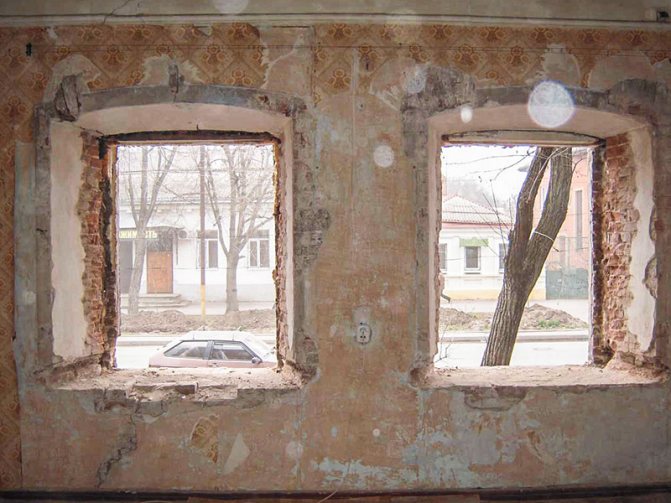

"Brezhnevkas" were distinguished by an improved layout, they were houses with nine floors, equipped with an elevator and a garbage chute. Here, all dimensions were determined by strict compliance with GOST. The houses of the sixtieth series were distinguished by the largest openings.
Modern new buildings have parameters that are regulated by state standards. The width and height of the holes vary, in addition, a strict account of the area of the interior is kept.The difference in the size of the holes allows you to achieve an optimal level of illumination of the space.
Important!! Multi-storey buildings of modern construction differ in that. that here the openings for the windows are in the load-bearing parts of the building, therefore, changing these structures is strictly prohibited
Manufacturers of PVC profile structures do not limit their own production to strict limits, they follow the wishes of the buyer, with pleasure even equipping non-standard structures. There are only some nuances regarding the design capabilities of a specific type of profile, as well as the weight of the glass unit.
the requirements of the state standard are subject to mandatory observance. This is the only way to guarantee the safety of being inside the building. Any deviation from generally accepted standards leads to an increase in the cost of the entire structure. Whereas typical models will help make the system cheaper by keeping the heat inside.
Choosing a mounting method
An important condition for laying openings with bricks is to ensure a reliable connection between the new structure and the old one.
There are two binding methods:
Suture dressing scheme.
- dressing of seams;
- anchoring.
Ligation of seams with an existing structure is used to seal brick walls. To do this, it is necessary to knock out bricks at the ends of the door opening to a width of at least 12 cm. Niches are formed, where new stones will enter when laying the opening with bricks. If the partition is folded into a half-brick, then it is enough to knock out the finishing halves in every fourth row.
The dressing method is not very suitable for sealing window openings, because they are made in a load-bearing wall folded in 1.5-3 stones (thickness from 250 mm). Here it is more appropriate to perform anchoring: using a perforator, drill holes in the side ends of the structure and hammer in pieces of reinforcement of a periodic profile there.
The diameter of the connecting reinforcement is from 6 to 10 mm, the depth of immersion in the thickness of the structure is at least 100 mm. Anchoring is performed every 3-4 rows, it is most convenient to do it during the erection of the partition, so that the seams of the new and old masonry coincide. This method is also used for bonding to concrete walls.
Device
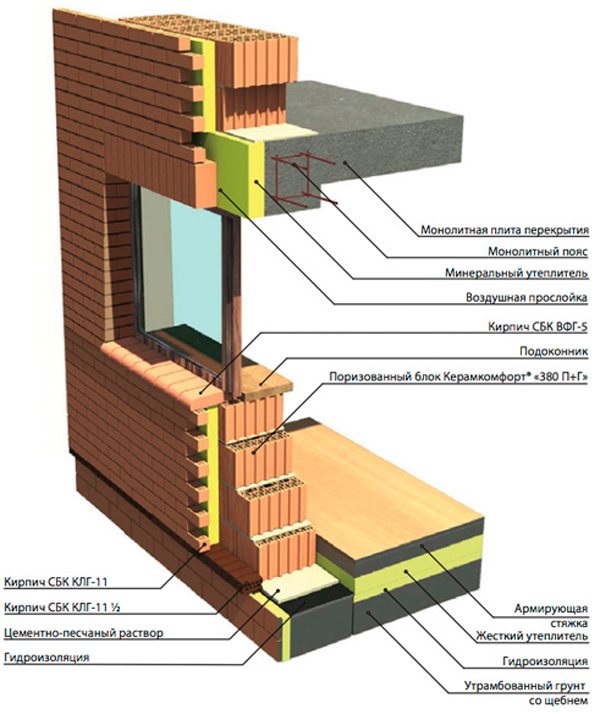

The device of window openings originates from the creation of a project for a future system. And here it is important to take into account not a single room, but the features of the entire structure. The specialists of the architectural firm will help with the correct calculation of the required parameters.
Rules to be followed:
- under the opening there should be up to 10 layers of brickwork, which will make it possible to achieve its high strength;
- a free plane remains on top, for it the bricks are laid perpendicular to the centerline of the wall;
- the ledge is necessarily mounted outward;
- the sidewalls are closed with solid bricks, the laying goes along the perimeter;
- thermal insulation is being installed, it will play the role of overlapping gaps, which manifested itself in the wall, strips;
- for overlapping, corners are used, laid at a distance of the dimensions of the material used for masonry;
- the outer corner is slightly drowned in the wall;
- the design of the facade is hidden under a layer of pouring-type material.
Before edge lining the hole, it is important to prepare a concrete pad. A reinforcing mesh is placed on it.
In addition to metal corners, experts use:
- I-beam;
- brick lintels;
- concrete block.
The overlap should be half the height of the entire structure, to which up to 15 cm is additionally added. The design of the opening requires an understatement, and the details are provided with a frame. The windows are made out after the frame is installed. The rules for this activity are practically the same for PVC and wood systems.
It should be noted that the width of the opening is chosen to be slightly larger than the parameter of the window frame.
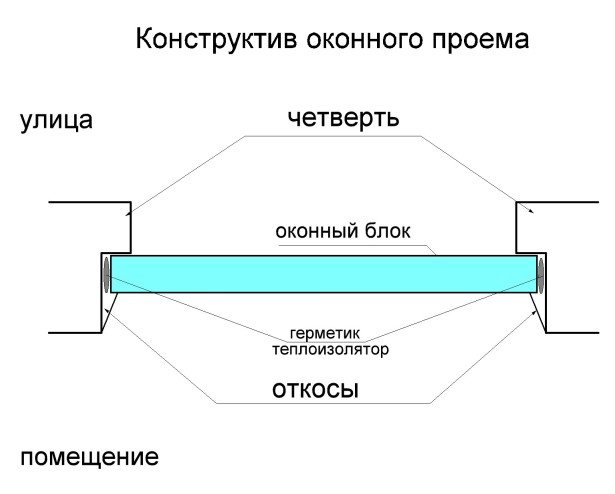

Installation work:
- structures of plastic, wood types are installed from the inside of the house;
- first put the sidewalls, then make an overlap on top;
- the horizontal lintel will take all the load, removing it from the ceiling beams, other rows of bricks;
- a lintel can be a concrete beam with a width of 25 to 30 cm, as well as a metal channel, a steel corner (12x12cm). The lintel can be replaced with a reinforced concrete block;
- steel lintels conduct heat unnecessarily, which leads to the appearance of cold bridges (this increases the likelihood of low temperatures penetrating into the room). Therefore, the product of decorative finishes must be carried out using heat-insulating materials;
- the length of the lintel must coincide with the parameters of the hole, it is allowed to approach the side parts of the opening up to 10 cm;
- when the jumper is laid, it is time to check the conformity of the dimensions;
- now the rest of the rows are being laid;
- the glass unit is mounted at the very end, after the roof is made, all existing gaps are sealed.
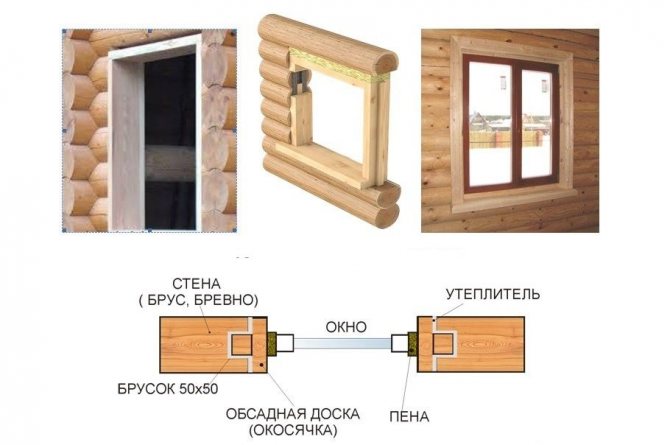

For wooden structures, the installation of the casing is mandatory. This element is necessary in order to prevent warping of the structure under the influence of the natural processes of shrinkage of the structure. Due to the constant pressure, the glass can break and the frame can bend.
Okosyachku is created from dry wood, collected according to certain rules. To connect it to the wall, create a groove located on the outer perimeter of the frame. He is seated against a ledge inside the wall.
The shedding is mounted from different raw materials:
- solid wood;
- laths glued to each other;
- combinations of slats and solid wood (the window sill is made of type-setting raw materials, the sidewalls and the top are made of solid wood).
Spikes or glue are used to connect the casing pieces. Further registration is carried out only when the house has sat down.
External design is created based on other building elements. The window sill can be galvanized, plastic. Carved platbands, PVC profile frames are placed around the block, framed with wood overlays. They act as an additional sealant.
The casing of a wooden house is attached directly to the casing, this increases the protection of joints from moisture and cold air penetration inside. It is allowed to expand the slopes only on condition that the walls will be finished by plastering, covered with decorative raw materials.
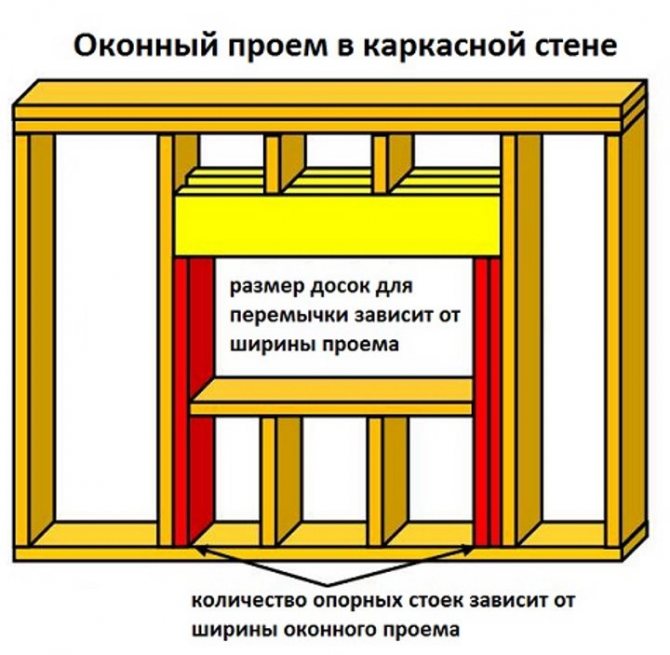

When PVC structures are being installed, plastic casing is used.
Cashing is required for:
- closing through slots;
- noise insulation;
- prevention of the formation of fungus, mold;
- interior styling.
In order to arrange the space as harmoniously as possible, it is important to choose the correct shade of cashing. As a rule, people prefer a wood-like texture. The planks should have a width that covers all existing gaps. It is important to take into account that massive platbands are only appropriate for equipping a large area.
The aerated concrete structure has some device features:
- here, props are placed inside the opening (trimming bars of sufficient thickness, steel pipes);
- a board is attached on top;
- then lay out the blocks that form the top of the hole;
- the recess is fixed with a mesh from the reinforcement;
- the structure is poured with liquid concrete.
Installation of window groups is carried out here after the concrete mixture has hardened. This period can last more than 4 weeks, it depends on the brand of the building mixture, changes in weather conditions, the presence of precipitation.
Related articles
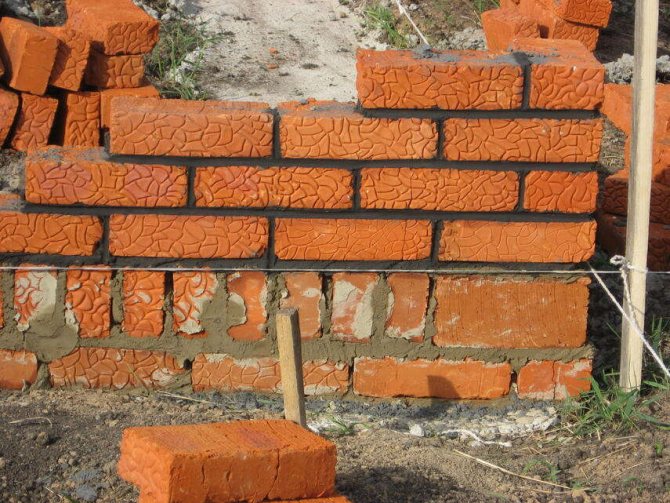

Brick foundation - step by step instructions, pros, cons, instructions, bricklayers' advice
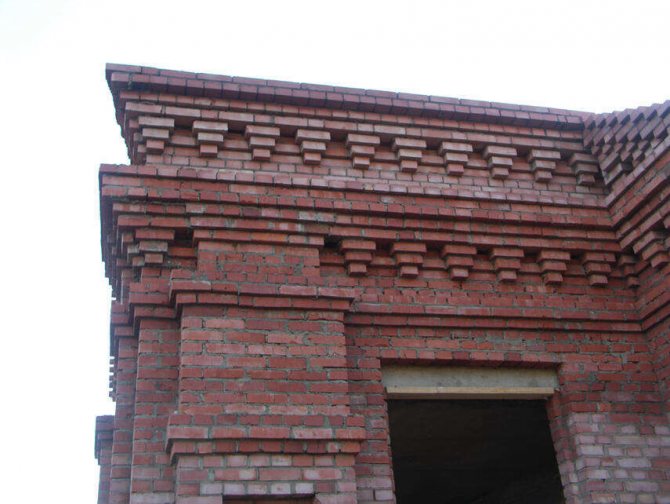

Brick cornice - how masonry is done, varieties, instructions, advice from bricklayers
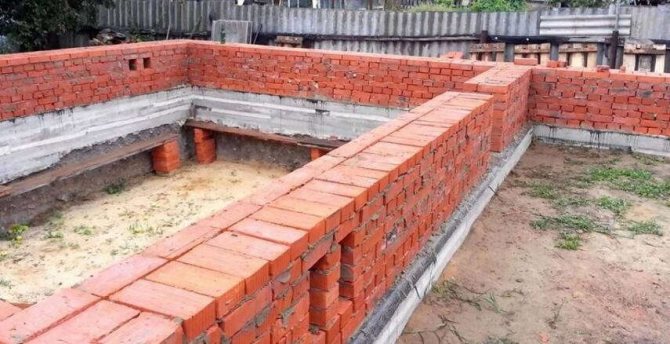

Brick plinth on a strip foundation - masonry technology, instructions, advice from bricklayers
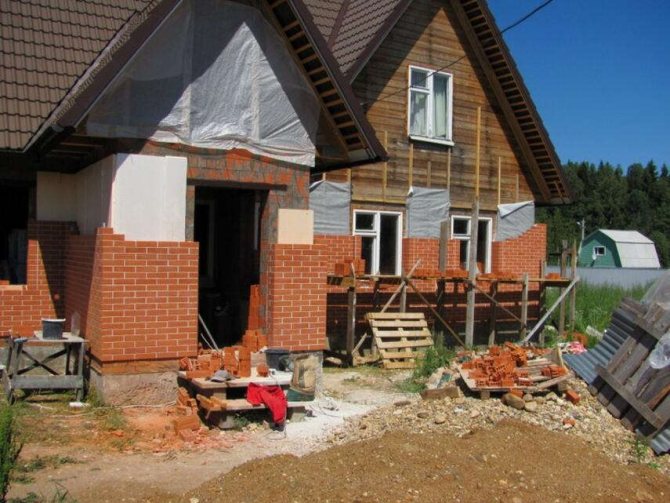

How to brick a wooden house - masonry, preparation, instructions, advice from bricklayers
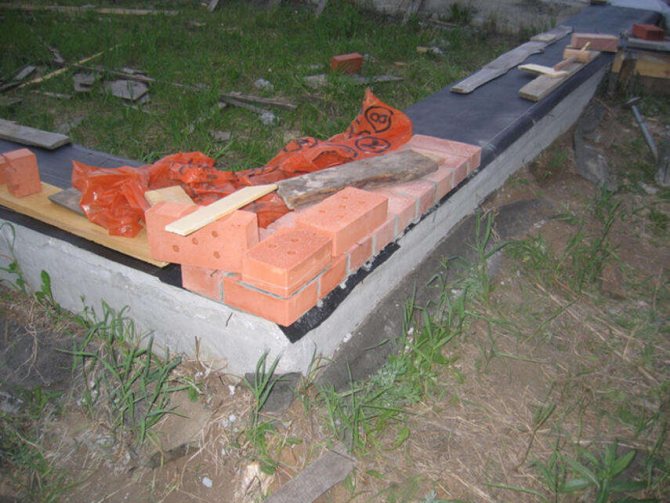

How to deduce zero with a brick on a foundation - methods, instructions, advice from bricklayers
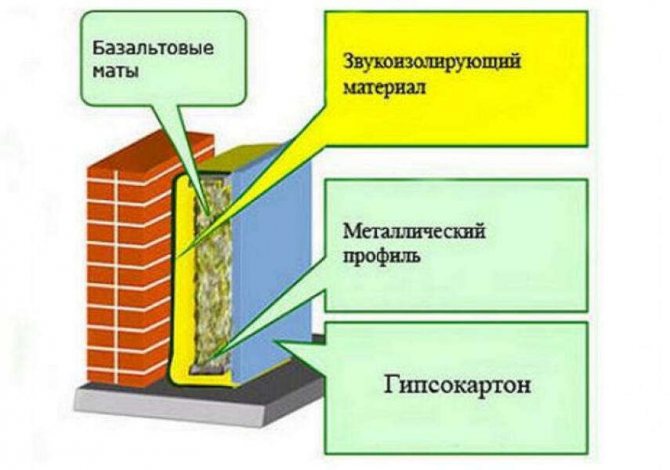

Soundproofing a brick wall - what can be done, instructions, advice from bricklayers
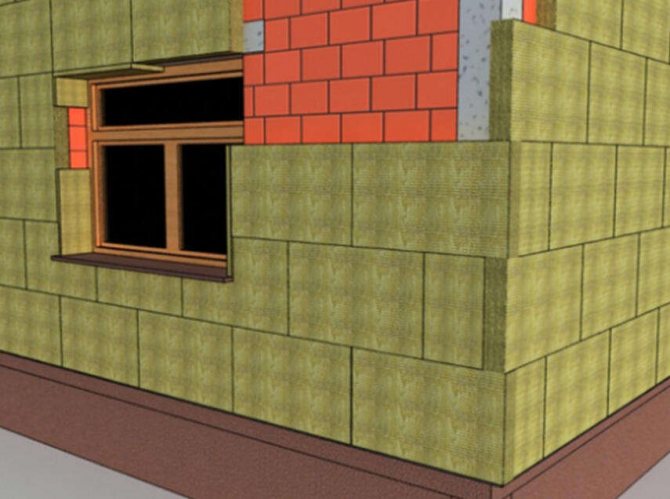

How to insulate a house in half a brick with mineral wool and expanded polystyrene ?, instructions, advice from bricklayers
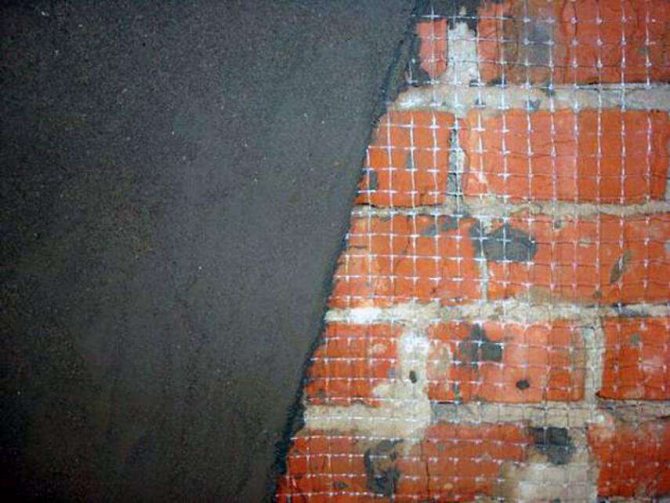

Thickness of plaster on brick - external and internal finishing, instructions, advice from bricklayers
Reviews ()
How to increase and decrease?
Window openings in a house can have different parameters. Sometimes it becomes necessary to install window units on a solid surface.
Important requirements:
- cut a hole for the overlap;
- put a block or a jumper structure;
- it is allowed to lay reinforcement, fill it with concrete;
- further the opening is insulated;
- the hole is filled from the bottom, next to the transversely standing bricks;
- after spreading the sides;
- the frame is placed after the solution has dried, the structure shrinks;
- any hole change is possible.
The state standard allows about 17 types of dimensions for window systems with two sashes. Today, developers use GOSTs for 40 series. Dimensions also depend on the area of space.
Premises for the implementation of economic needs allow an increase or decrease in parameters by 4 times. For example, the area of the window block of a toilet, storage room, boiler room can be 3% of the area of the entire room.
When such events are required
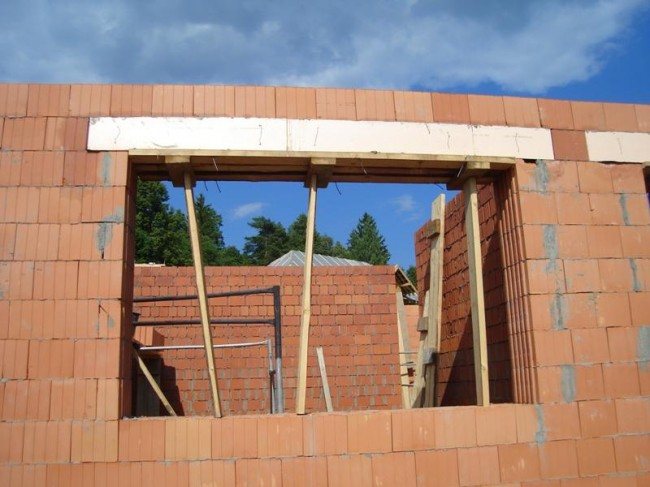

window opening in a brick wall
Make an opening in a brick wall may also be needed when the load-bearing part of the building lies on the way to the reconstruction of the building. It is extremely undesirable to demolish and penetrate into the structure itself, which means that you need to think about how to properly coordinate your re-planner's desires. This will help to create a hole that can be made without weakening the entire house.
Approach wisely
Pre-planning is a priori in this kind of work. First of all, you will definitely need to design, prepare, and then install the jumper itself. The entire load of the wall located above the resulting hole will go to it. You can additionally read about the implementation of arched lintels here.
Here, such important points are taken as a basis. :
- the view of the masonry itself;
- the width of the wall itself;
- the width of the potential "hole";
- the distance from it to adjacent surfaces;
- the same, but up to the top floor;
- floor of the building in which the work is carried out.
To determine the size that the window opening in the brick wall should contain, you must also take into account the total area of the entire room. Finding it about the cardinal points will also be relevant.
Advice
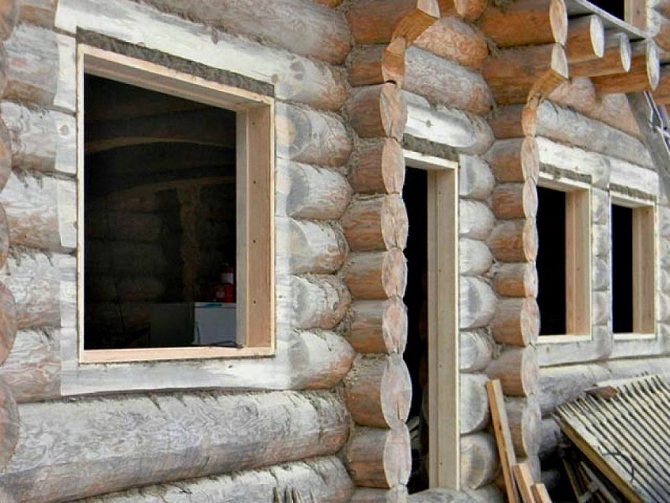

Window openings require special attention. In order not to overlook anything, you need to pay attention to useful recommendations:
- When choosing technical indicators, one should be guided by the purpose of the room.
- The number of glazed elements must ensure that a sufficient level of natural light penetrates inside. The sun's rays should be enough to get by without turning on the electric light during the day.
- A country house requires careful attention to the design of the exterior, its harmony with the surrounding space. Here you need to pay attention to the decoration of the facades, the framing of the double-glazed windows.
- When the house is located in a cold region, with a short daylight hours, the windows are mounted from the south or southwest. When the weather conditions are good, the structures are mounted from the north or east.
The functionality and usability of window systems are very important. the height of the window sill from the floor is of particular importance. According to experts, the benchmark is kept to such indicators:
- living room, bedroom, children's room: 70-90 cm, this distance will give an excellent view, access to the rays of sunlight;
- kitchen, dining room: 80-120 cm.Such parameters are important for the dimensions of the countertop, because it should be located at the same level with the sink, other furniture;
- bathroom, bathroom: 1960 cm. This indicator allows you to provide the necessary ventilation, but will not allow prying eyes to get inside;
- utility rooms: 160 cm and above. Here, a small window is often mounted;
- insulated veranda, balcony, terrace: 70-100 cm.
Equipment of window openings when lining the house
The photo shows the masonry of the opening on the corner
The laying of window openings from facing bricks even look as aesthetically pleasing as possible. Therefore, the use of a channel or concrete floors is not very relevant. But it is quite possible to use a wide metal angle. Only in this case, we lay it only on the side of the bearing wall, on the front side there will be no visible fasteners.
In some cases, the metal corner is additionally attached to the facade, but with a good laying, this is not necessary. It is also worth considering that the finishing material will have to be cut so that we do not have protruding parts of the facade, and it looks as good as possible. To do this, it is necessary to apply a dry layout of the stone before laying it.
Instruments
Brickwork does not require any special professional tools. For such work, you must prepare the following:
- an appropriate container for the preparation of the solution;
- a drill with a special nozzle for mixing the construction mixture;
- Master OK;
- a hammer;
- plumb line and level.
If it is possible to purchase a ready-made solution at a specialized enterprise, then this will greatly facilitate the workflow. It is advisable to carry out such work in warm dry weather.
